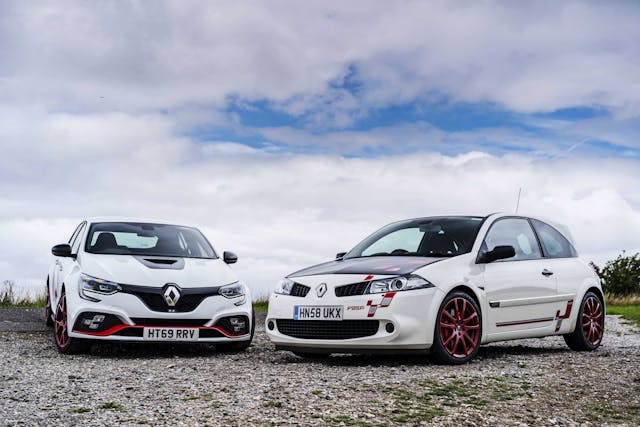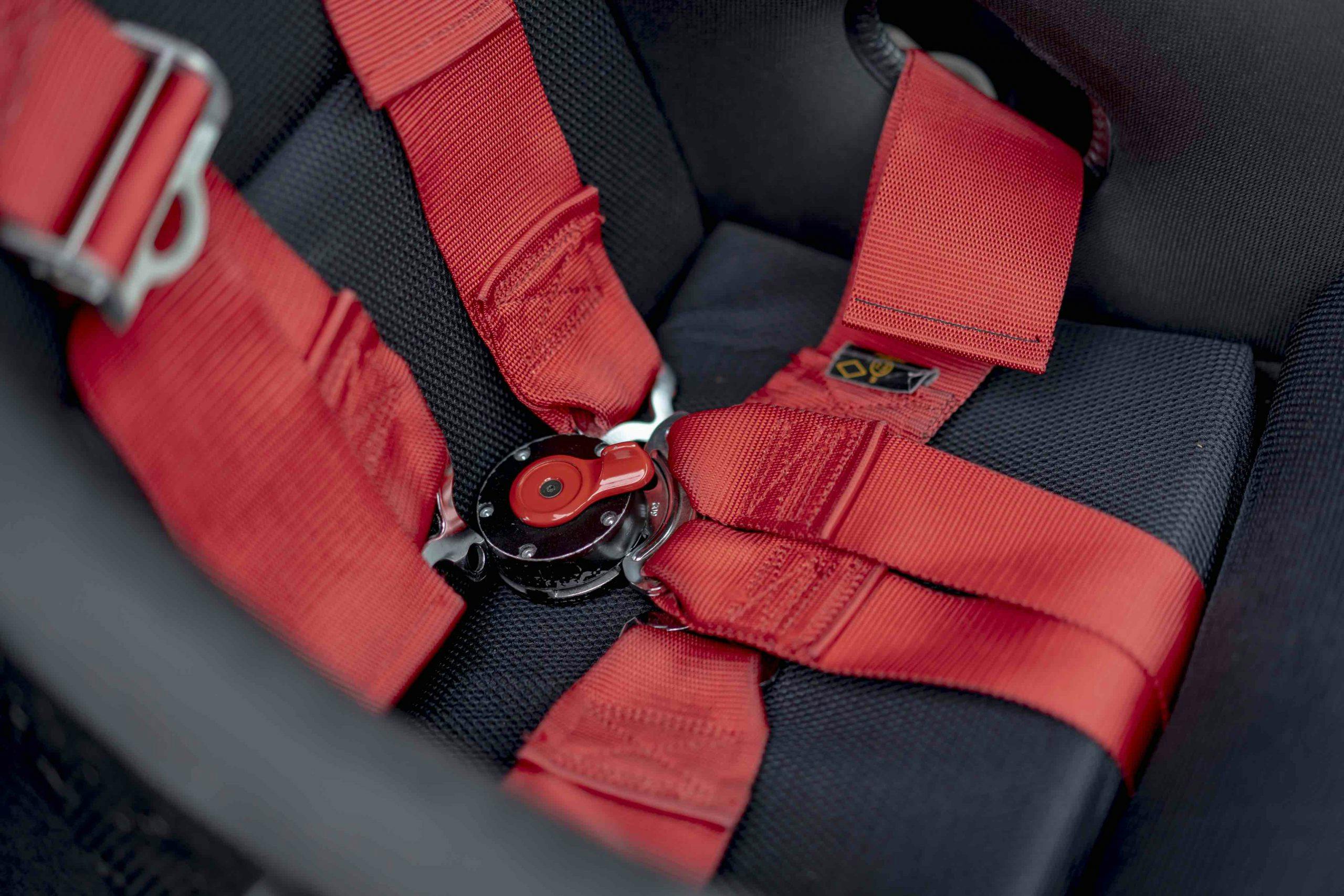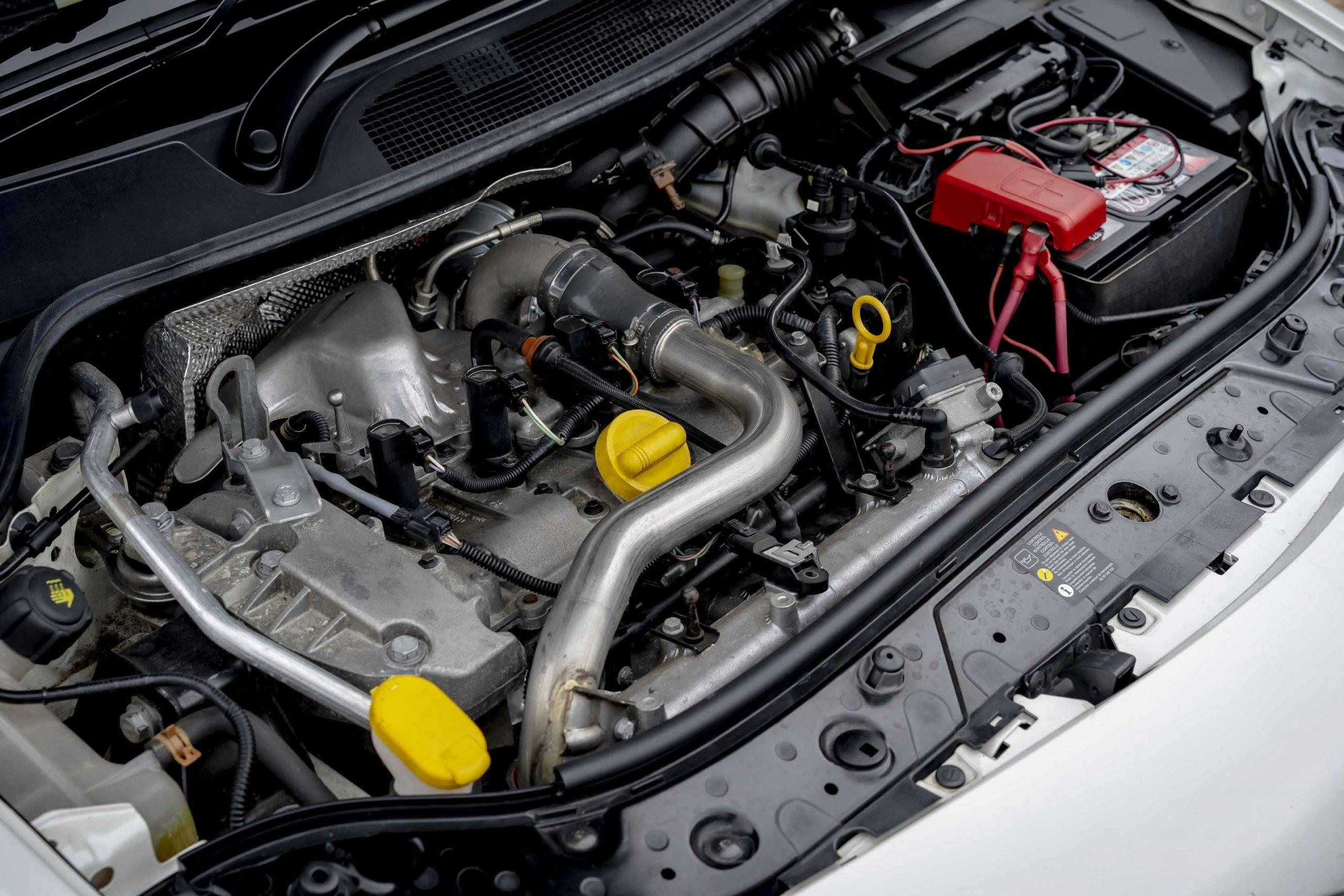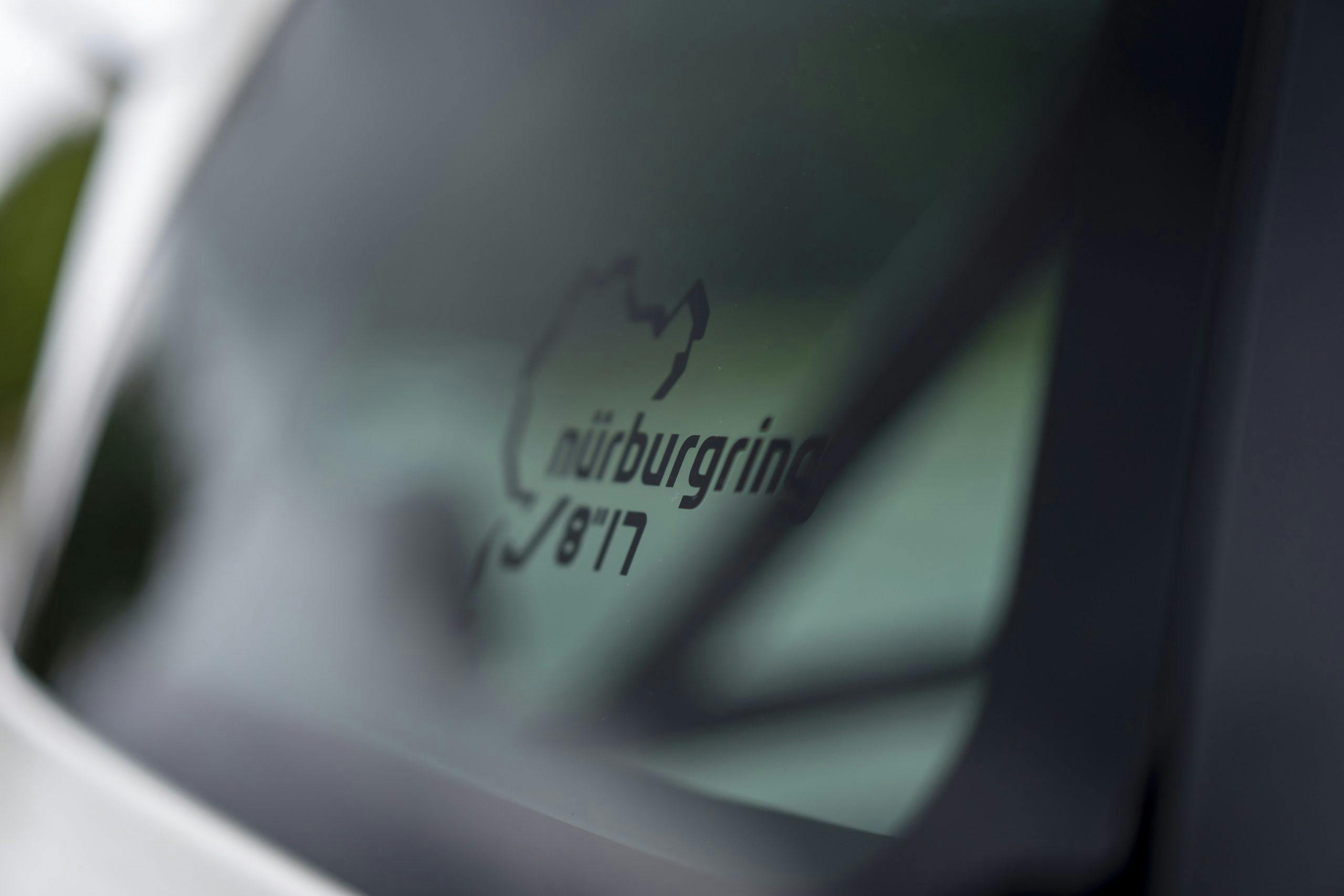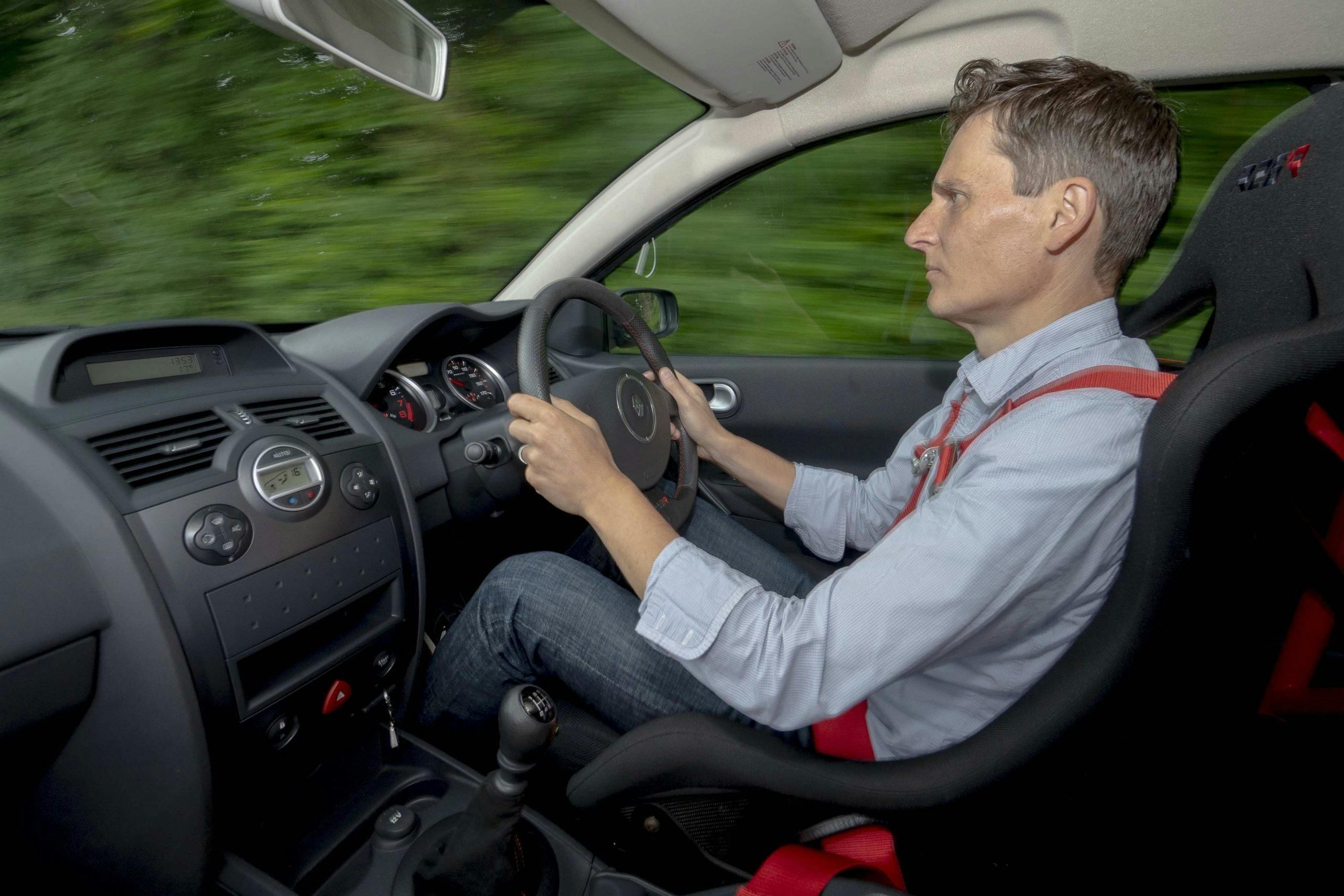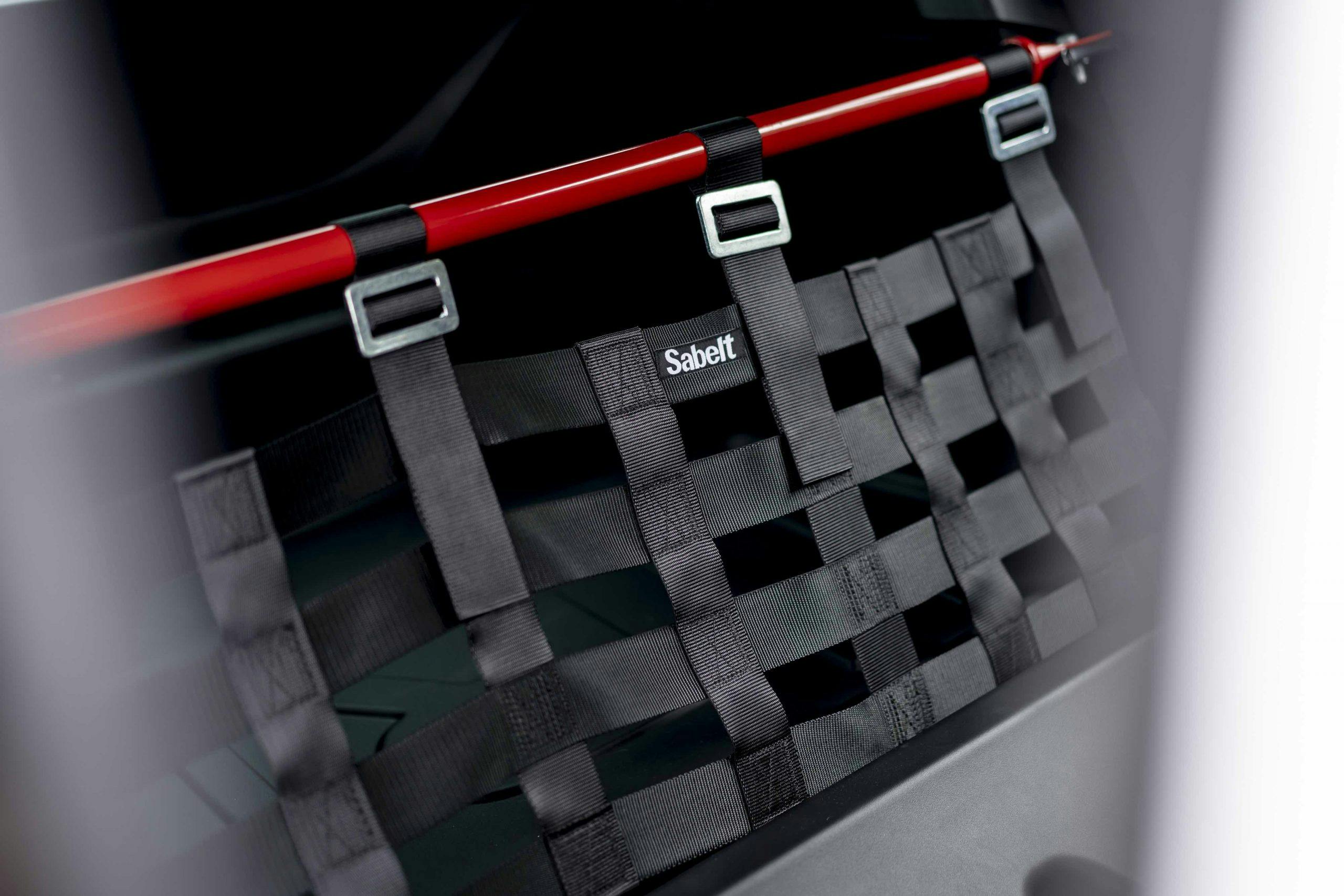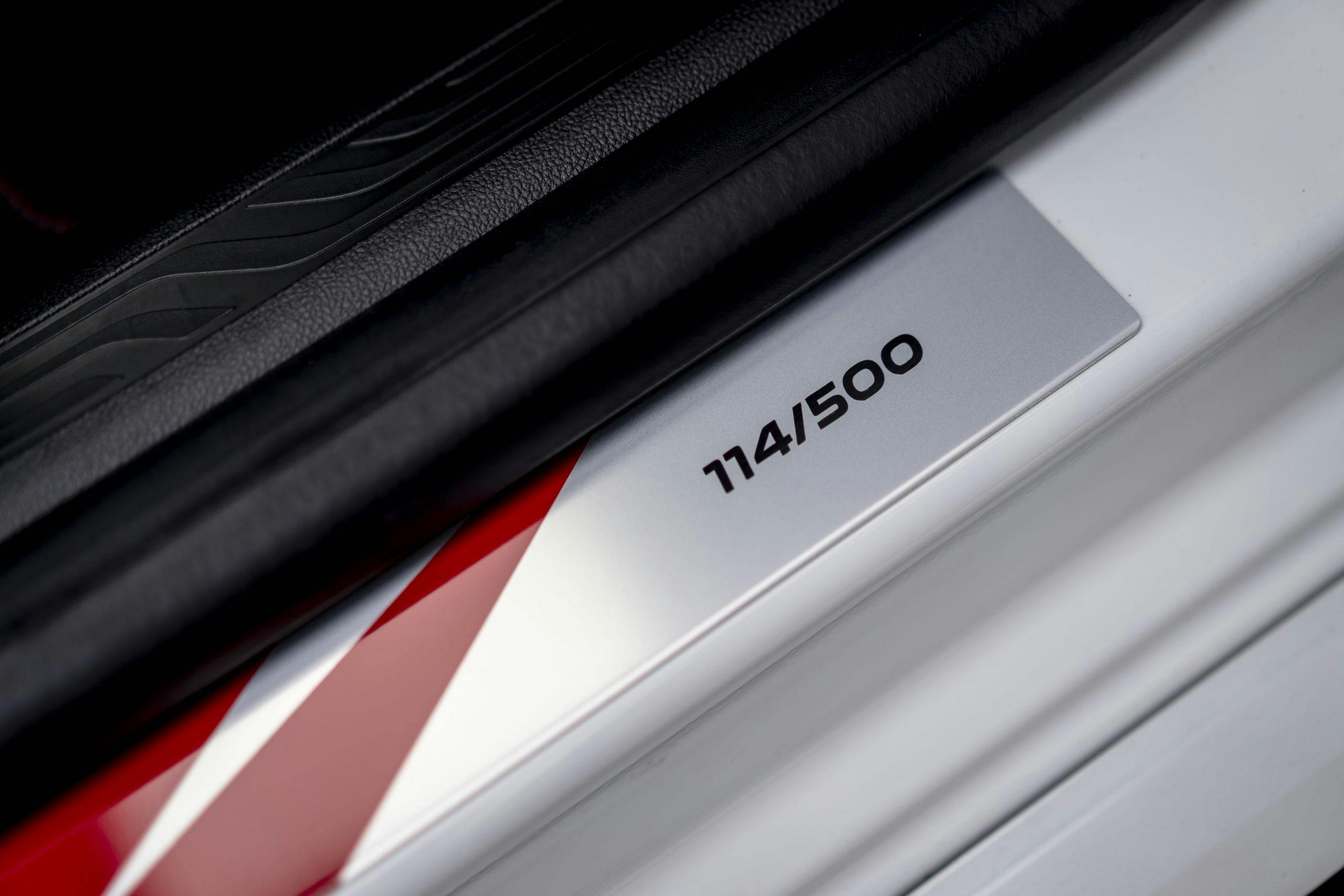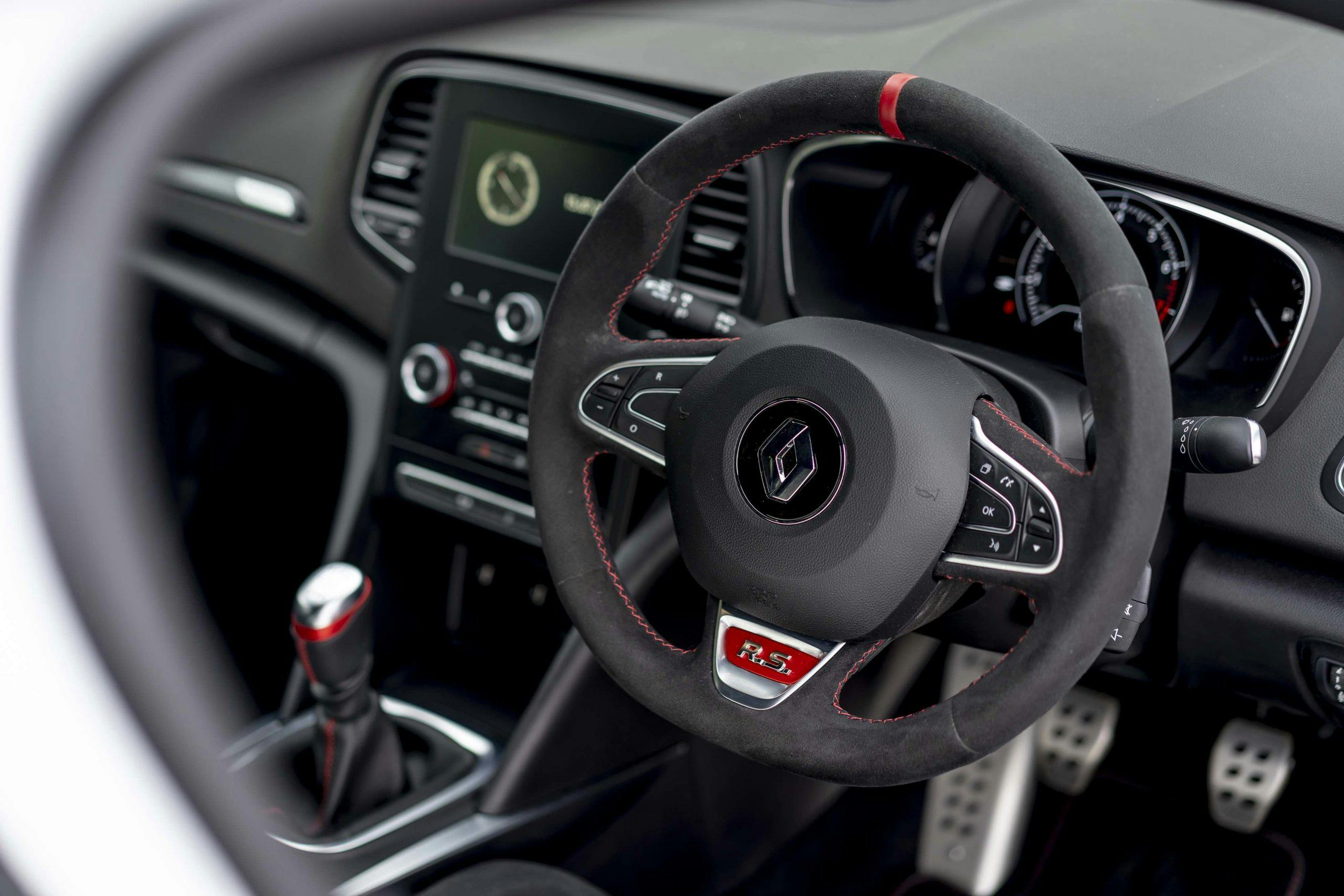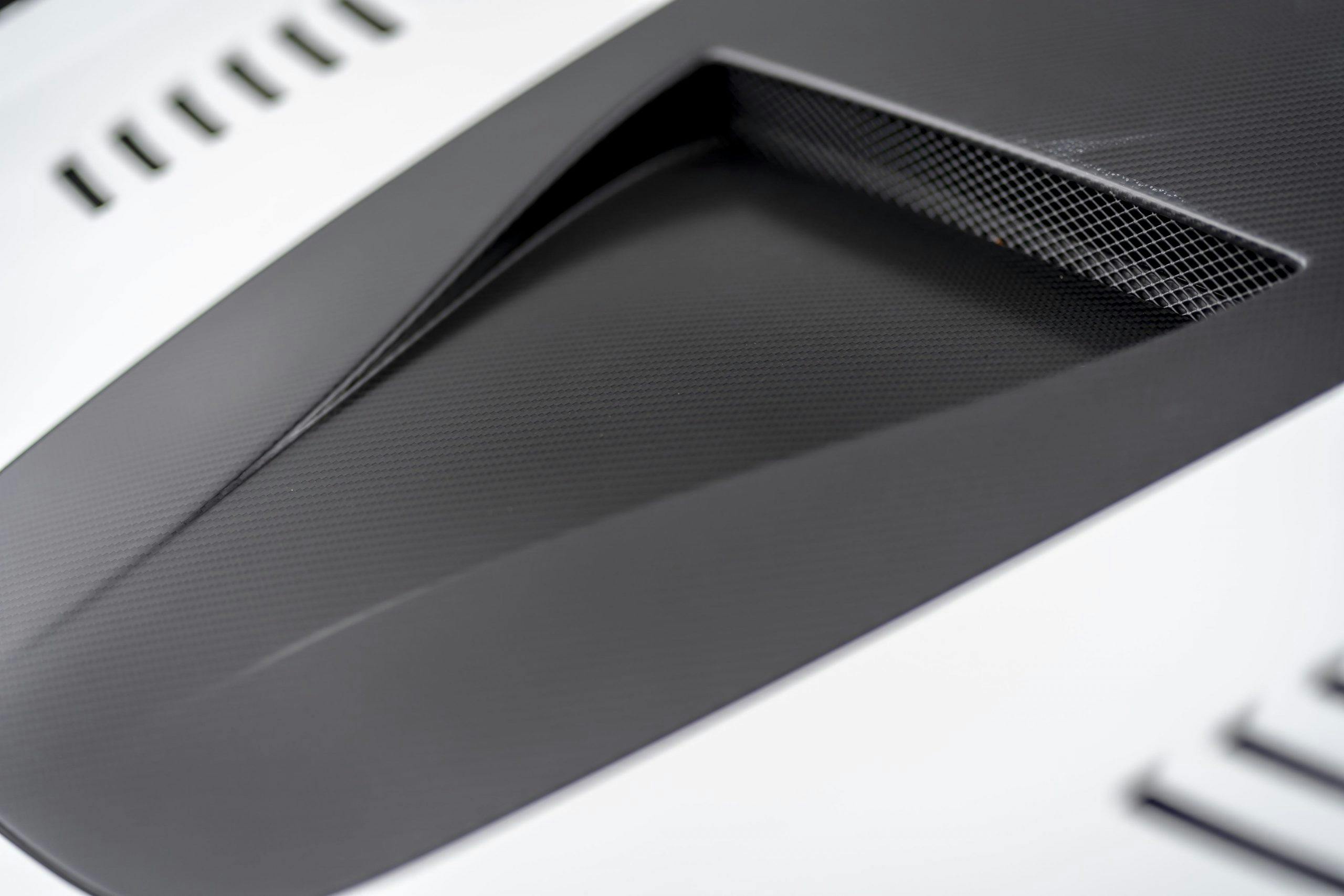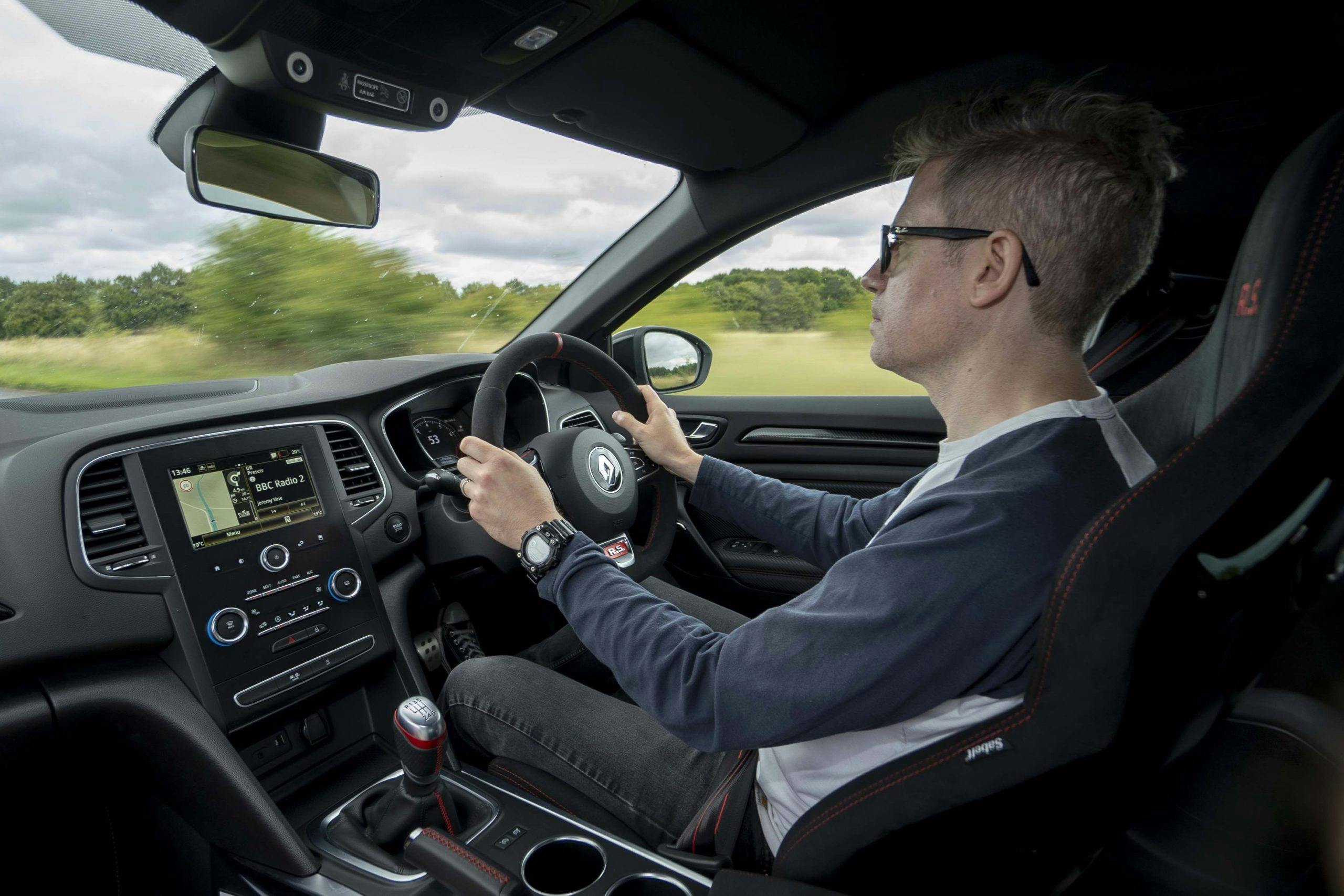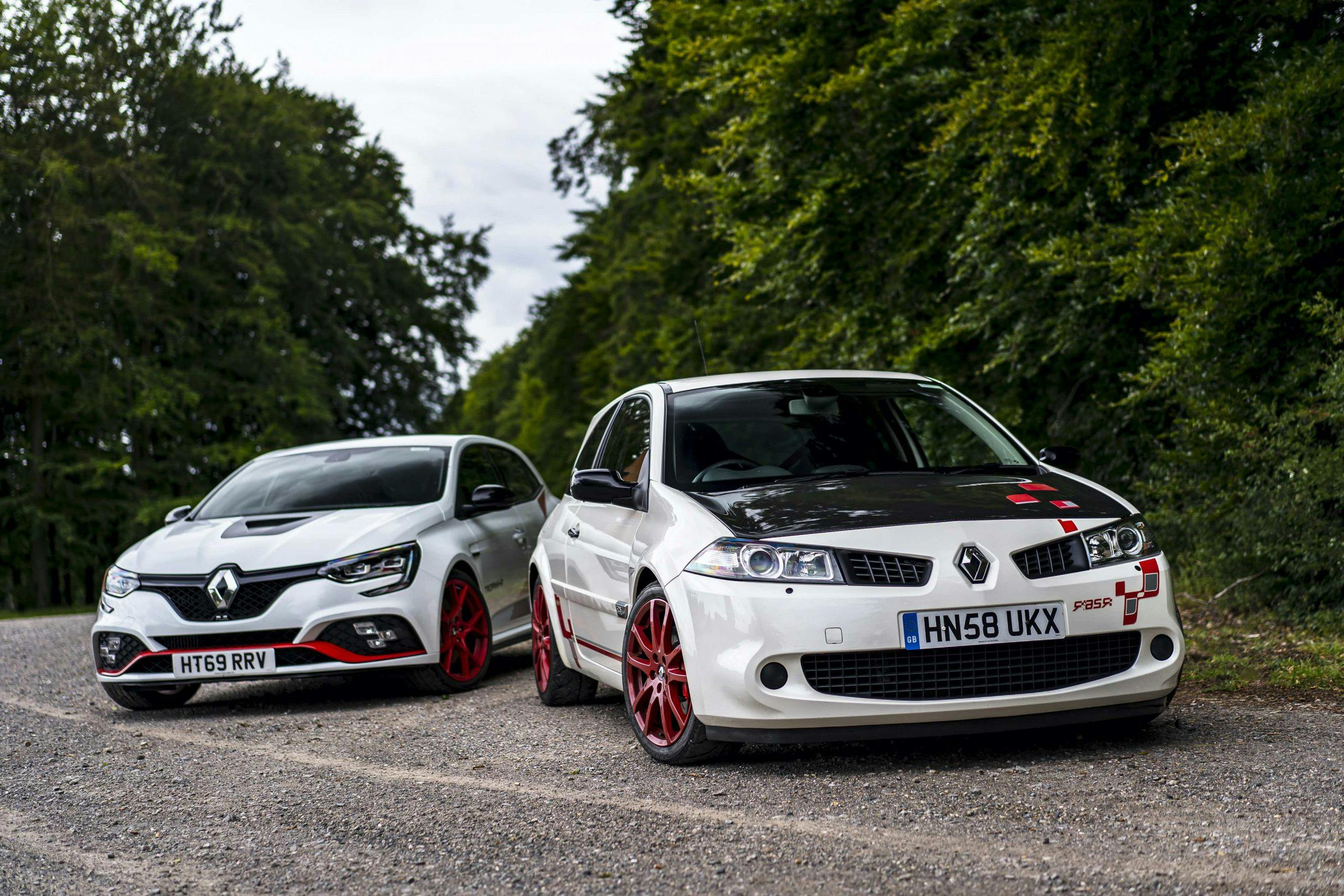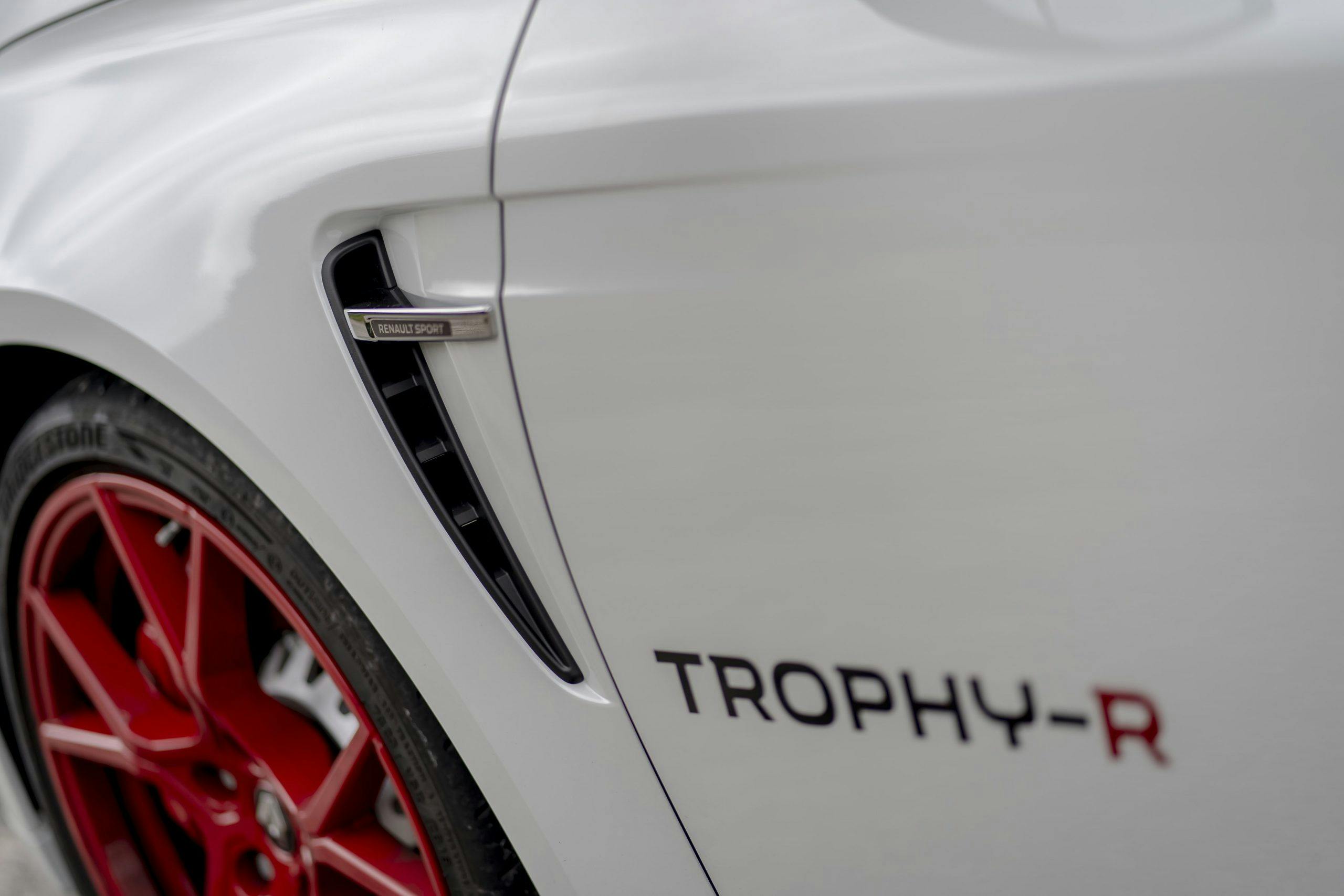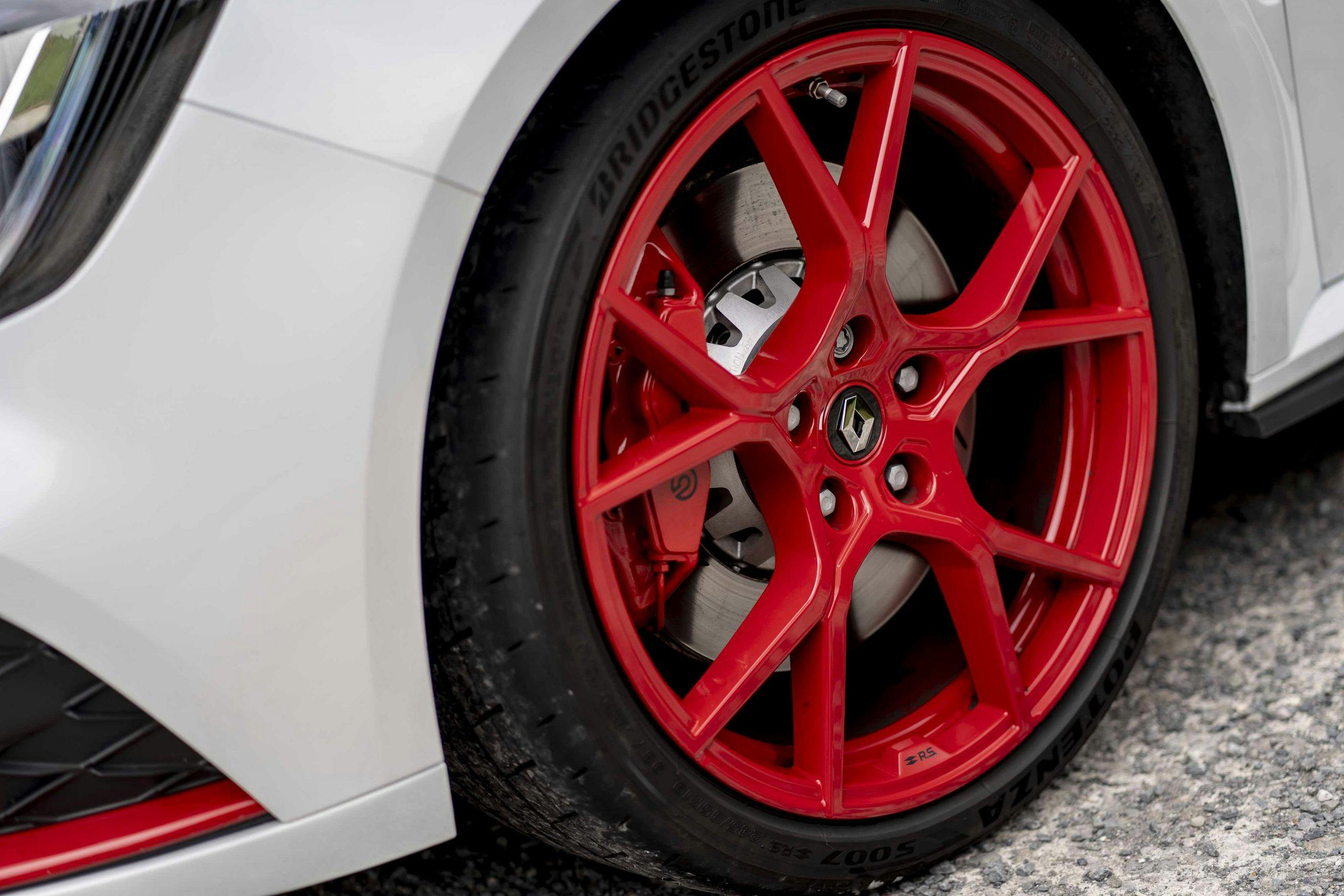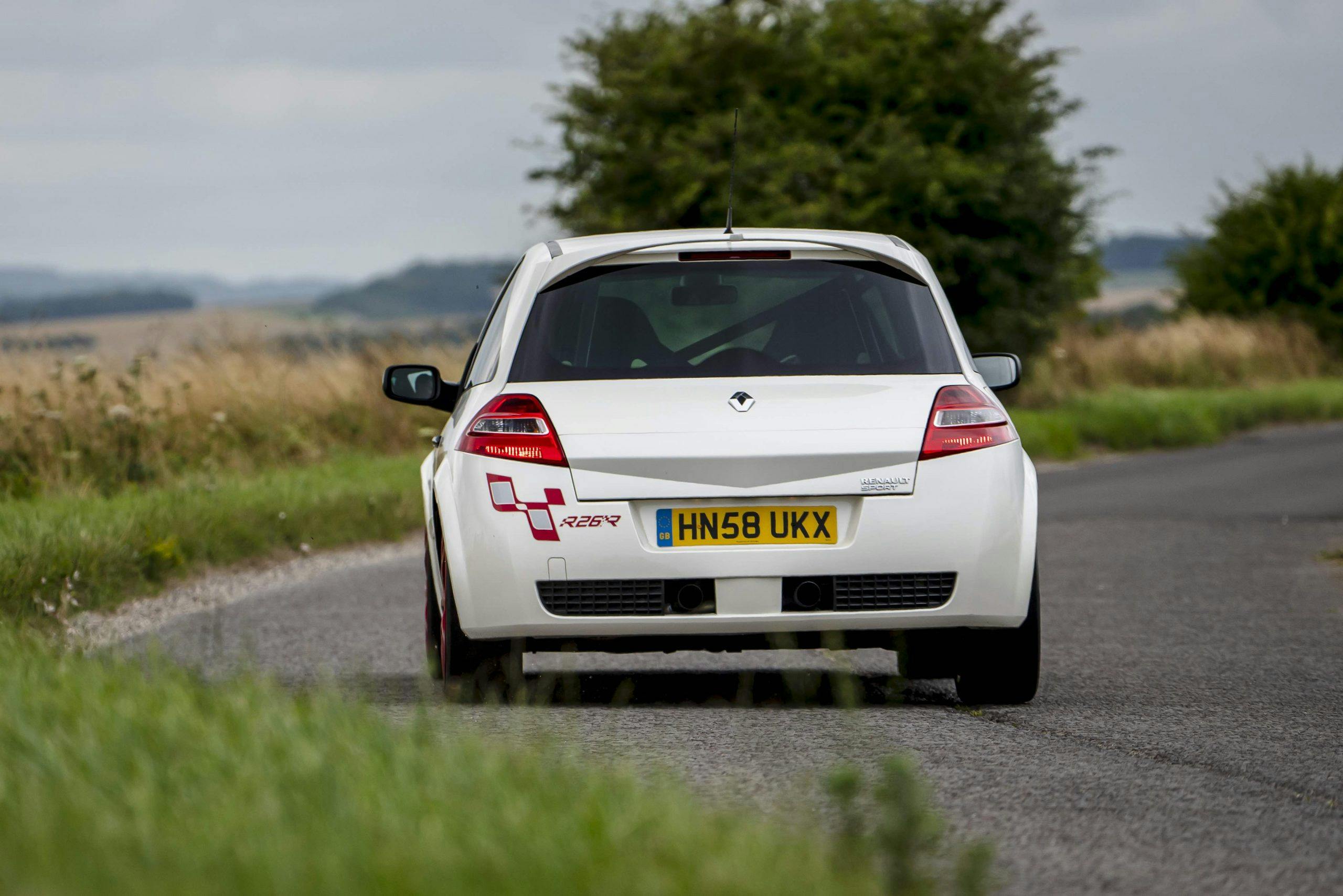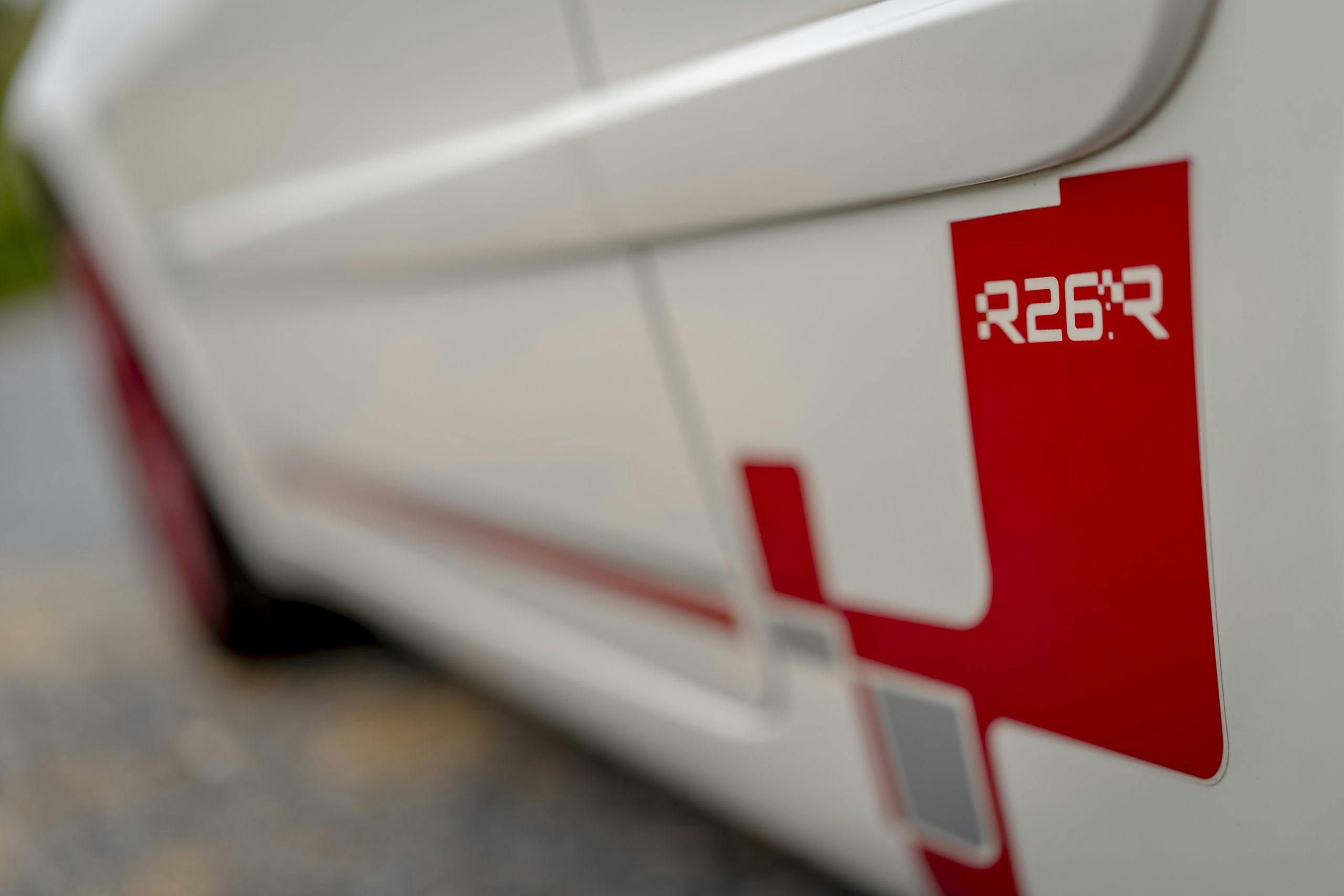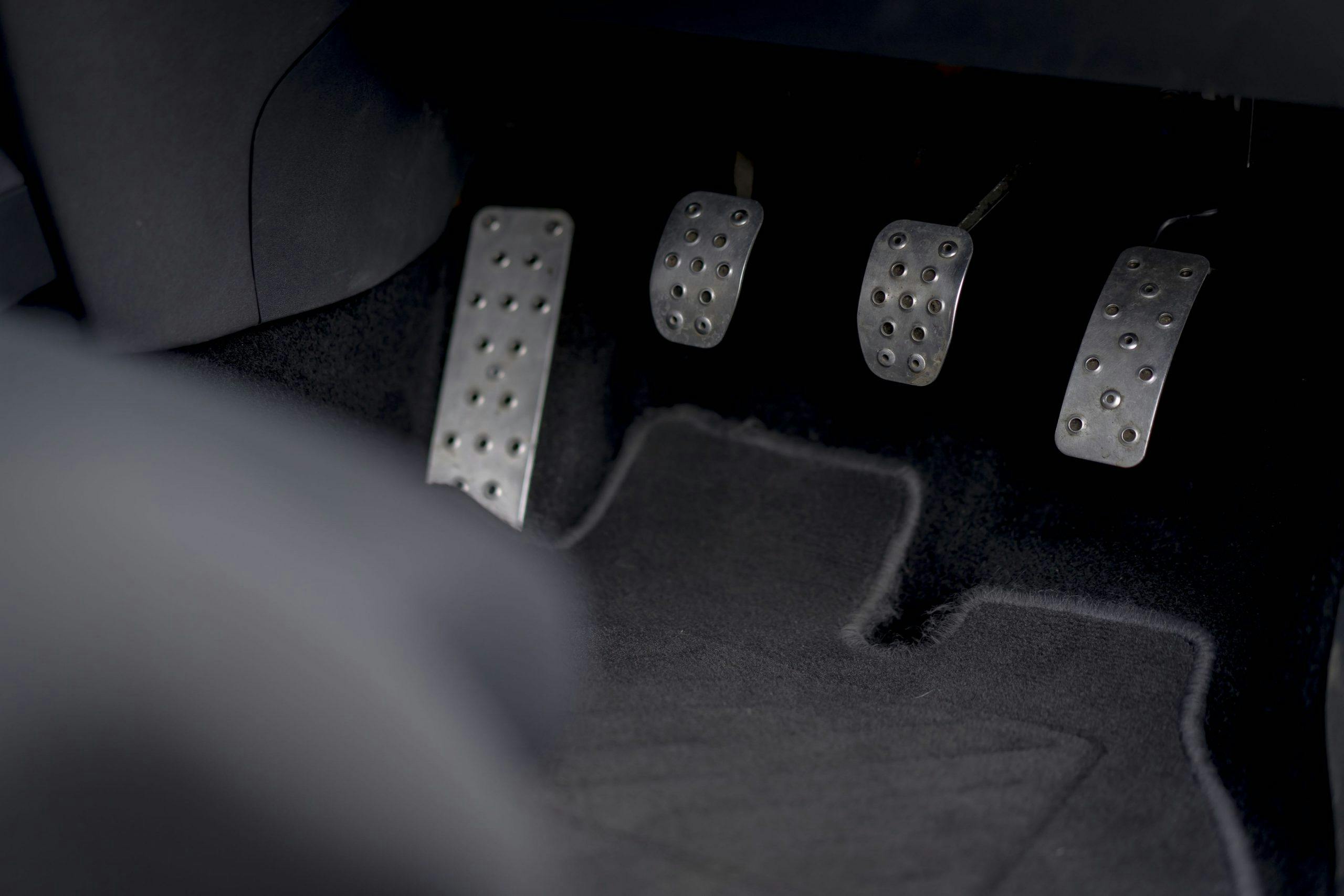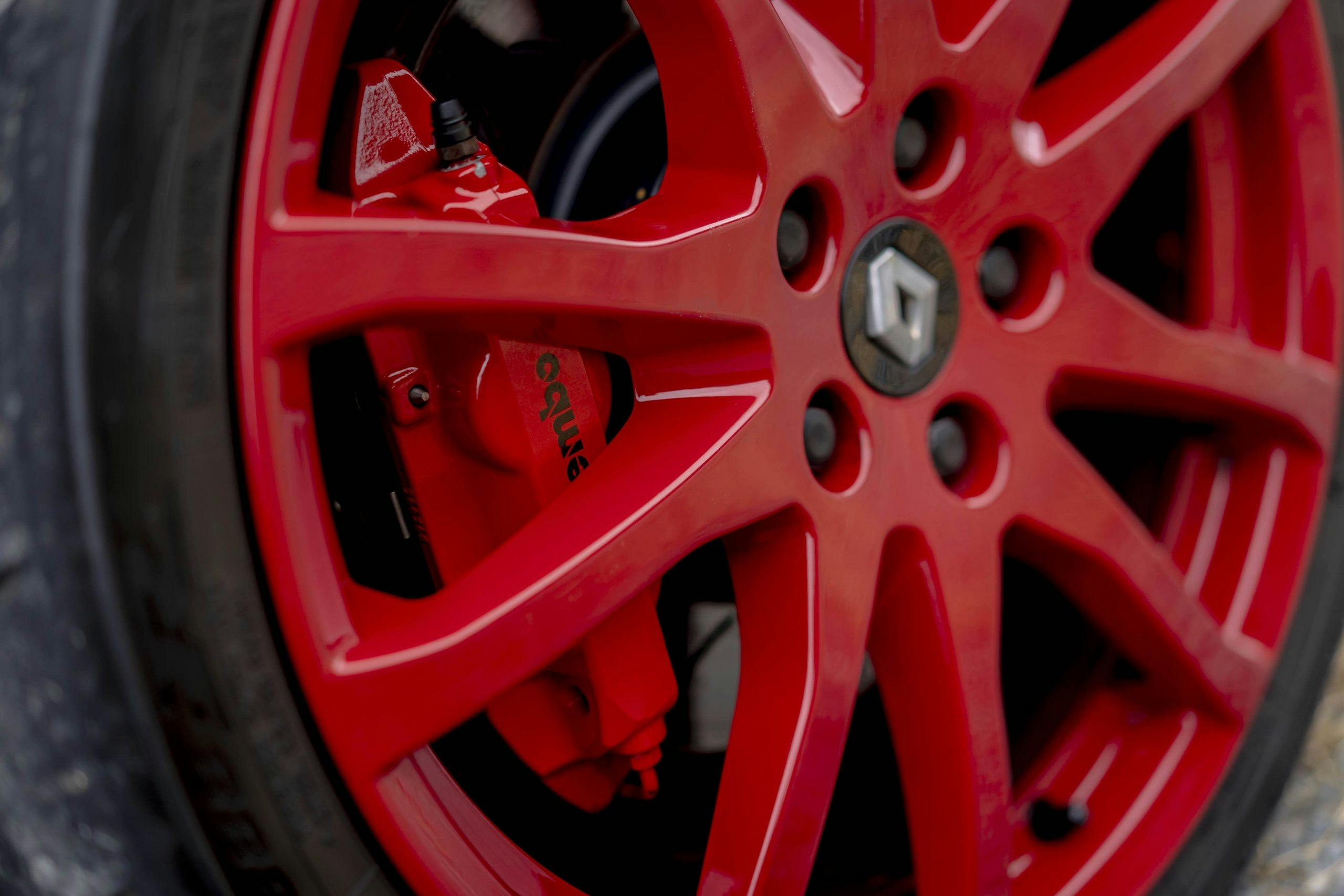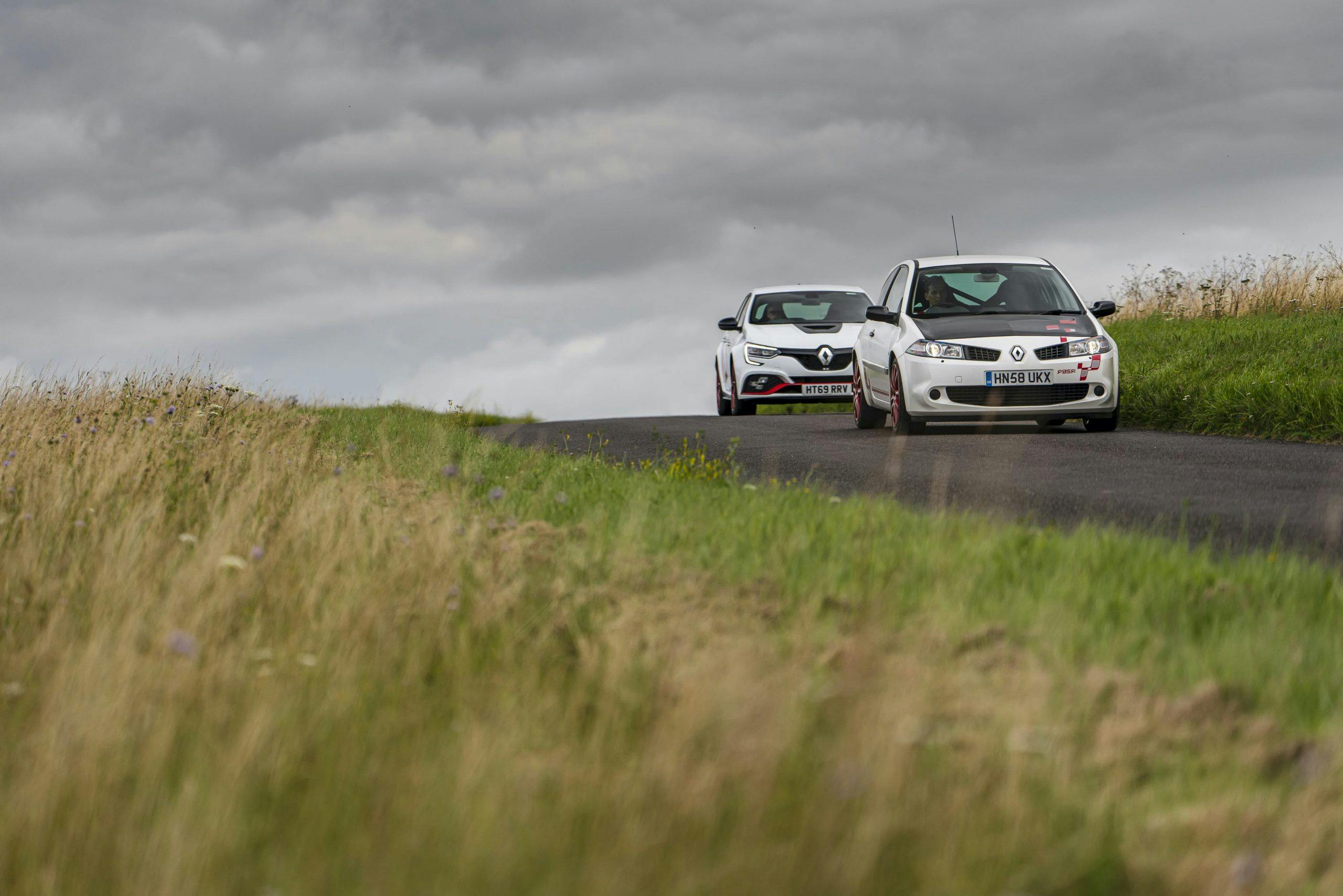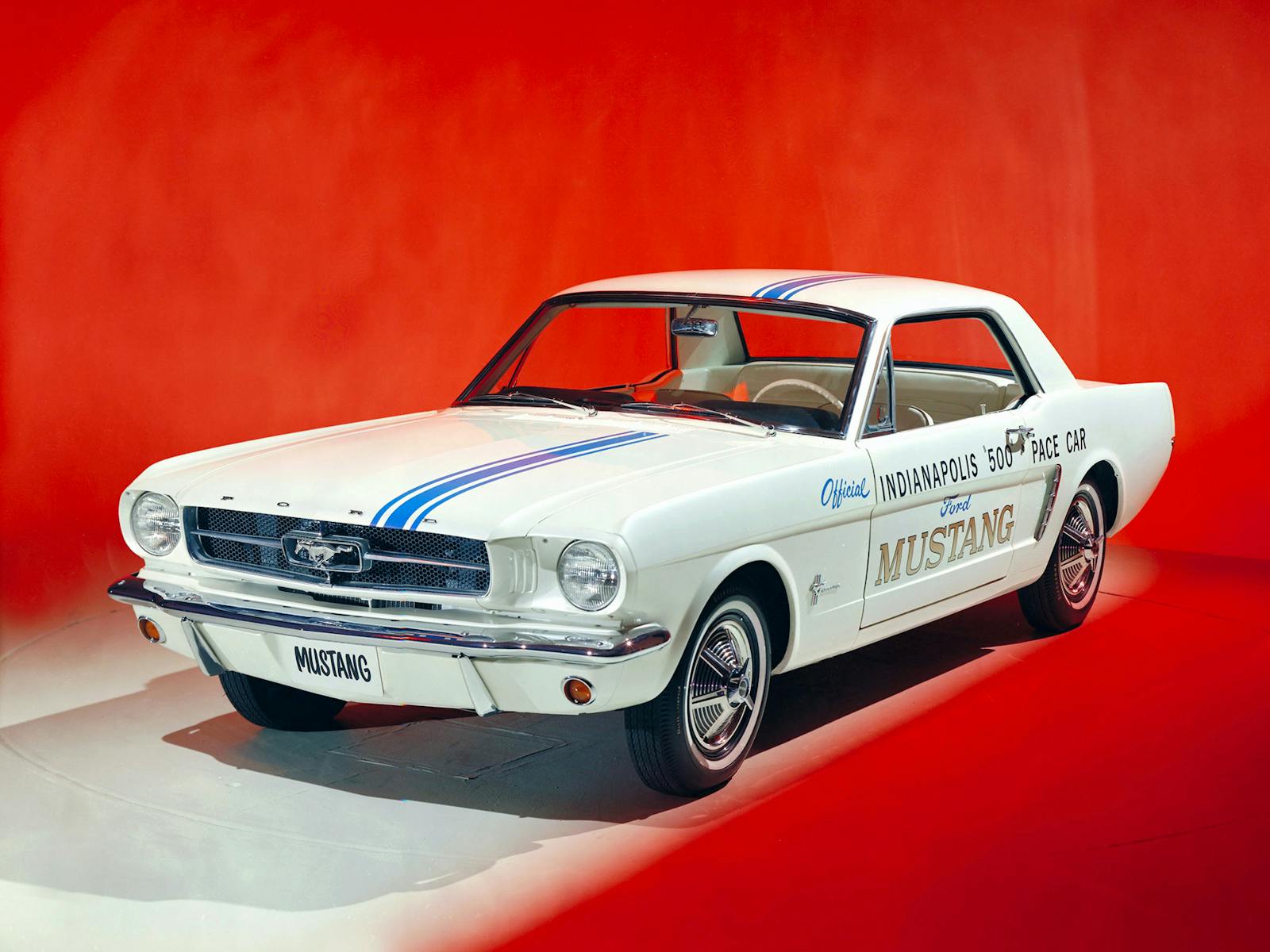Euro rewind: Renault Megane R26R vs. Megane RS Trophy R
Hatches have got hotter. Lap times have tumbled, and Nürburgring records swap between car makers like hot potatoes. Arguably the car that first escalated this arms race was the 227-hp Renault Megane R26R of 2008, and it’s a race that continues with the latest 300-hp Megane RS Trophy R. Separated by over a decade of progress, how do these two rapid Renaults compare today?
It’s a question we set out to answer in the best way possible: bringing the two together for some turbocharged action on the wonderfully open stretches of tarmac that make their way across the U.K.’s Salisbury Plain.
One is brand-new and crammed full with the latest technical wizardry, a car very much born of the digital age. The other has a dozen years behind it and is well qualified for future classic status. When push comes to shove, and you cut to the core of this French duo, which does the best job of leaving drivers with a smile on their face and skip in their step?
The modern classic: 2008 Renault Megane R26R
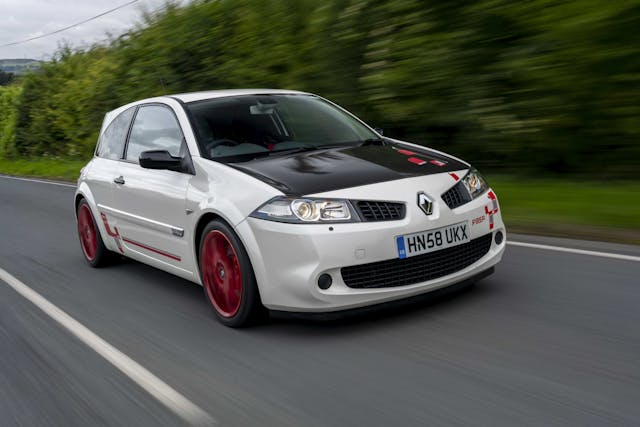
Right car wrong time, that was the R26R. In 2008 it was a revelation: a lighter, more agile version of the Megane R26 that proved itself on the Green Hell with a lap faster than a Porsche Cayman S. This was a feat of which Renault was so proud the R26 wore its 8:17 time as a badge of honor on its side windows.
The plan was to build 450 of the cars at the former Alpine factory in Dieppe and 230 were to be sold in the U.K. for £22,990 a pop, but the global financial crisis had other ideas. Just 159 made it to British enthusiasts.
Those that did get their cars were in for an experience like no other. Renault already had quite the reputation for heating up its hatches. From the first Gordinis, through the amazing 5 Turbos, the Clio Williams, and V-6s, The Reggie has gone to all manner of extremes in the search for speed.
For the R26R lightness would be the key to extracting the ultimate performance from the Megane platform. Renaultsport stripped 120 kg (265 pounds) out of the car when compared to the standard R26. The rear seats were thrown out and a half-cage bolted in, the back side windows were replaced with plastic and the hood was swapped for one made of carbon fiber. The front seats were switched for one-piece fixed-back race units, complete with Sabelt five-point harnesses.
Mechanically, the changes were more subtle. The 2.0-liter, 16-valve, turbocharged four-cylinder engine doled out the same 227 hp as the R26 (maybe a touch more with the optional titanium exhaust). The five-speed manual transmission was also as fitted to its lesser sibling, albeit with a slightly shorter lever, and the limited-slip differential was unchanged. Where Renaultsport got busy was in suspension tuning. Reducing weight allowed the engineers to soften front and rear springs rates by around ten percent, whilst fitting more sophisticated dampers. The funky red alloy wheels were also shod with sticky Toyo track-focused tires. Behind them sat beefy red-painted Brembo brake calipers.
Driving the R26R is a special occasion every single time. It begins with the normally simple task of settling behind the wheel. You need to lift yourself over the high-sided bucket seat, and drop into it, then make sure you close the door before buckling into the harness or you won’t be able to reach the handle. The renegade racer vibe is palpable.
The engine starts with a pleasingly gruff note and a vibration that shimmers through the basic plastic dash and those plexiglass side windows. As soon have you rolled away for the first time you appreciate the car’s lightness of being. The steering feels initially a little over-assisted, but you soon come to trust it as you pick up the pace. And it has plenty of that.
From rest the R26R will hit 62 mph in six seconds, putting its power down surprisingly cleanly for a front-wheel drive machine. And it will do so on seemingly any surface, race-track smooth or B-road bumpy. The suspension is miraculously compliant, the car taking bumps and lumps in its stride. The grip from those Toyo tires is stupendous and the stopping power from the Brembos is right up there with modern machinery—something that often betrays a car’s age.
And what’s this? No need to choose between driving modes, throttle response or steering weight? All you have to decide is whether or not to cancel the ESP system —and trust us, you will.
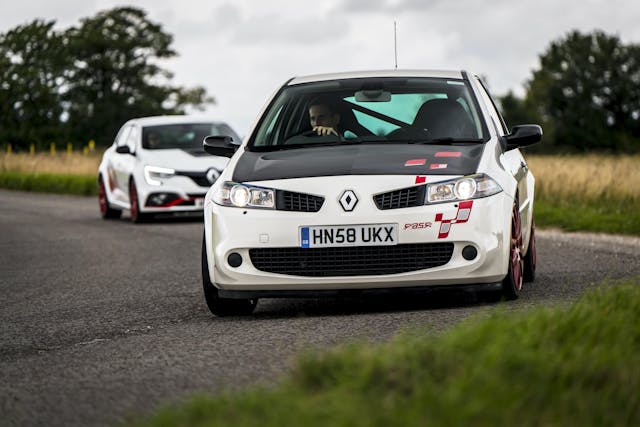
There’s a delightful adjustability in the chassis, and like all the best racy Renaults it will lift a rear wheel in aggressive cornering. Jump out of the throttle mid-corner and the car will rotate just enough for you to apply a little corrective lock and get back on the power. All the while, you’re feeling what’s happening through the seat of your pants. It’s an intuitive plaything, one that encourages you to explore the limits and work it harder and harder as each mile rolls beneath its sticky Toyota tires.
Meanwhile, the soundtrack is one of whooshes and whistles from the turbo, with a few pops and bangs from the exhaust on the overrun thrown in for good measure.
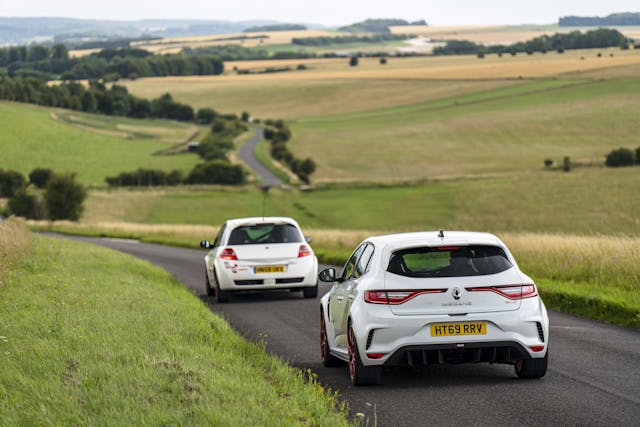
Finding fault if we must, gear changes aren’t as slick as they could be and the plastics used are pretty low-rent, but the R26R still makes a very solid case for itself today. It’s just modern enough to be reassuring, but it feels refreshingly pure and unfiltered in its manners thanks to all those efforts to save weight and dial in the chassis. Yet despite this, it’s not too taxing on a long run, meaning that track day you always fancied need not be out of reach.
For now, at least, the price isn’t too out of reach either, with decent examples available from around £16,000 ($21,300). It may have taken a decade, but the R26R’s time has come. It’s a high point on the timeline of the hot hatch. Shame it won’t be eligible for U.S. import until 2032.
The future classic: Renault Megane RS Trophy R
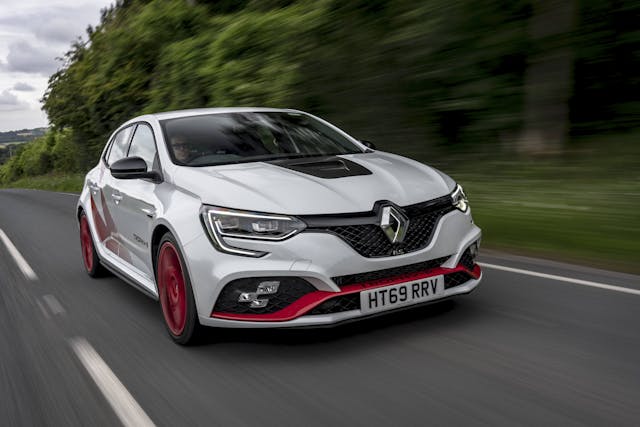
There are plenty of people who just won’t “get” the Renault Megane RS Trophy R. They’ll puzzle at the decals, peer through the rear windows and wonder who stole the back seat. They’ll hear the pops and crackles of the exhaust and think that a tune-up is in order. They’ll discover the £50,000-plus ($66,500+) price and assume that someone moved a decimal point.
And that’s just fine, because the Renault Megane RS Trophy R is not for the many. It’s for the few. The very few. Only 500 have been made and of them just 32 have reached the U.K. There are more LaFerraris (36) in Britain than Trophy Rs. Rarity alone should guarantee this hottest of hot hatchbacks future classic status, but there are so many more reasons that this rocket Renault will be worth hanging onto.
This is a car that smashed the production front-wheel-drive lap record at the Nürburgring with a time of 7:40.1. It also topped the charts at Spa and Suzuka (although Honda just snatched that back with a Civic Type R Special Edition). It didn’t do this with brute force; the Trophy R actually has the same engine as the standard Trophy. Instead the speed comes through attention to detail, saving weight, improving aerodynamics, suspension and braking. Some stickier tires don’t hurt, either.
Let’s begin with the engine. The turbocharged 1.8-liter four-cylinder produces 300 hp which is good for 0-62 mph in 5.4 seconds. But that’s only three tenths faster than a regular Trophy. Power is delivered to the front wheels through a six-speed manual transmission even though shift paddles would be quicker. Why take that approach? The manual gearbox is lighter.
Lightness, of course, is something that RenaultSport took very seriously, just as it did with the R26R. The Trophy R is 130 kg (286 pounds) lighter than the Trophy. It uses thinner glass and, most noticeably does without rear seats. There’s a sizable brace across the rear, webbing net and space for a full set of spare wheels and tires. Should you wish, Renault will sell you carbon wheels to save another 2 kg (4.5 pounds) at each corner. The front seats are Sabelt composite buckets and can be fitted with full six-point harnesses. And the centre touch screen is smaller than a regular Megane’s to shave a few more grams.
From the outside you’ll also spot the lightweight carbon-fiber hood, complete with NACA duct which sends air not to the engine but beneath the car to serve the aerodynamics. The carbon rear diffuser chips in here to create downforce. A lightweight Akrapovič exhaust system is the final touch.
Under the skin, the biggest changes are to the suspension and brakes. Adjustable Öhlins dampers are fitted all around, and the active rear steering fitted to other Meganes has been dropped to save weight and provide a bit more stability. Braking is taken care of by giant 335-mm (13.1-inch) Brembo discs, while ceramic discs and gold calipers are a pricey upgrade.
Start adding all these components up and you begin to understand why the Trophy R is so expensive, but does it feel it to drive?
In a word, yes. The first time you turn the Alcantara steering wheel with purpose you’ll appreciate the engineering that has gone into this thing. It has been designed to carry speed through corners like few other vehicles. I cannot say that I ever got close to running out of grip on the road, despite piling into bends faster than I thought possible. And when you need to shed speed those huge brakes are extraordinary. What a weapon this thing must be on a circuit. Yet, despite this purity of purpose the Trophy R has kept its air conditioning and infotainment system, so you could live with it as daily driver.

There’s a small “but”, though. The new machine feels like a product of the digital age by comparison to its forebear. It’s fantastic when weighed against its contemporaries, but it can’t match the R26R for a certain natural, organic feel.
Renault chose to launch this car early in the current Megane’s lifespan, partly to get it out before tighter emissions rules would throttle it or force the use of an automatic gearbox like the Mini JCW GP. There’s definitely a feeling of this Trophy R being one of the last of its kind and, if you need another reason to believe this is a future classic, that might just be it.
